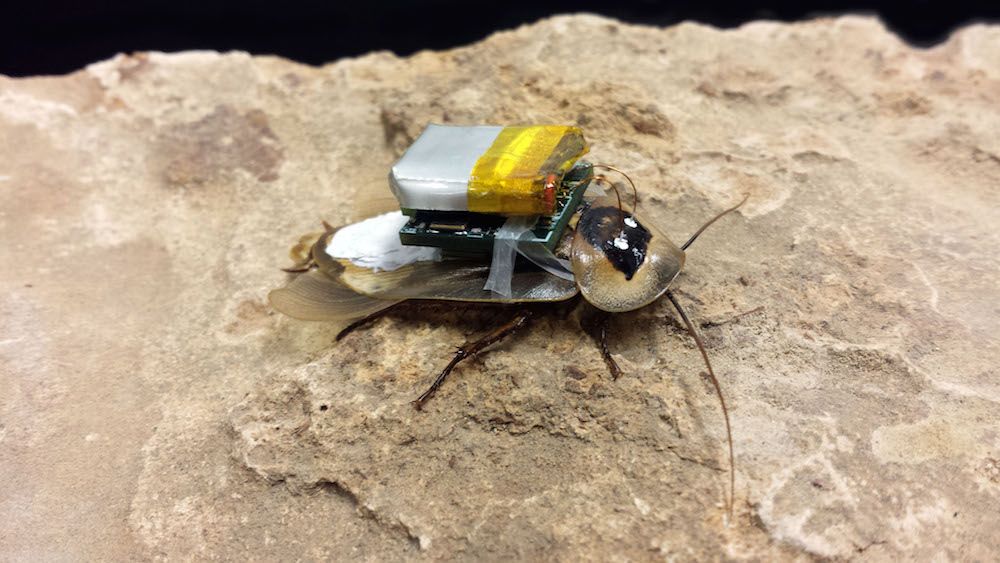Cyborg Roaches Could Be Used to Find Disaster Survivors

Fleets of cyborg cockroaches could someday roam into damaged nuclear power plants or collapsed mines to carry out reconnaissance or locate survivors.
A team of researchers implanted live cockroaches with electrodes that stimulate the nerves in the insects' antennae, enabling the scientists to steer the creatures around like remote-controlled toys.
While people may normally think of cockroaches as pests that live on human waste, these insects are better than any small-scale robots that exist today, said Hong Liang, a materials scientist at Texas A&M University in College Station, and co-author of the study published online today (March 4) in the Journal of the Royal Society Interface. [The 6 Strangest Robots Ever Created]
The remote-controlled roaches can "go anywhere you guide them to," including places humans couldn't go, such as disaster zones, Liang told Live Science.
In the new study, Liang and her colleagues implanted electrodes in the nerves of American and discoid cockroaches (Periplaneta Americanaand Blaberus discoidalis, respectively).
The researchers glued tiny backpacks to the backs of the discoid roaches, which were large enough to support them. Each pack held a microcontroller, wireless transceiver and a battery.
The resulting cyborg roaches were leashed and made to run on a trackball, while the researchers pressed buttons to deliver electrical zaps to the nerves in the insects' thoraxes, causing them to turn left or right. Liang and her team were able to make the roaches walk and turn in the desired direction 60 percent of the time, they said.
Sign up for the Live Science daily newsletter now
Get the world’s most fascinating discoveries delivered straight to your inbox.
It may sound cruel to control a living insect using a remote. Fortunately, "We don't work them hard," Liang said. "We let them rest."
Now, Liang and her colleagues are developing a noninvasive version of the cockroach control system, which uses a vibrating motor positioned near the roaches' antennae to make the insects move. This would work because cockroaches have a sensor to detect sounds or vibrations from predators, for example. Unlike the electrodes, the vibrating device would not involve surgery or risk damaging the insect.
Cockroaches are very interesting creatures, Liang said. People think they are disgusting, but in fact they're constantly cleaning themselves, she said. If they lose a leg, they can grow another one. And they're one of only a few species that can survive being exposed to dangerous amounts of nuclear radiation.
"After having them for a while, I keep some in my office as a pet," Liang said.
Follow Tanya Lewis on Twitter. Follow us @livescience, Facebook & Google+. Original article on Live Science.











